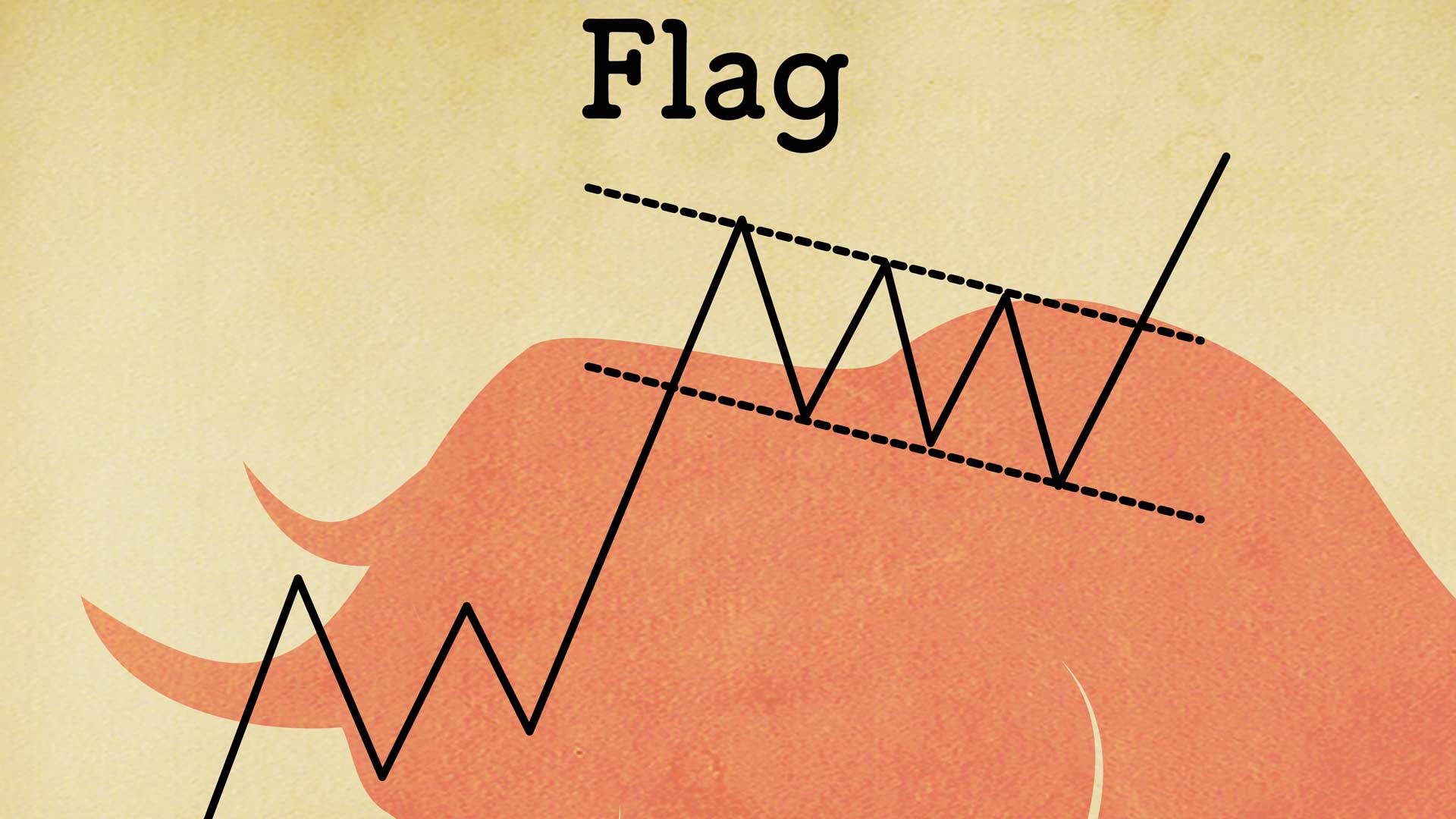A bull flag pattern is one of the most reliable continuation patterns in trading. It is defined as a period of consolidation following a sharp rally.
This pause gives the market a chance to catch its breath after an overextended move to the upside.
A bull flag is easy to spot and often results in a strong move in the direction of the trend. Bulls see this as an opportunity to enter long positions or add to existing ones. Let’s take a closer look at how this pattern develops and how traders can take advantage of it.
Let’s have a look at what a bull flag pattern is, how to trade it, and some tips for success.
What is a bull flag pattern and what are its characteristics
A bull flag is a chart pattern traders use to identify potential bullish breakouts in the market. The breakout from a bull flag typically occurs when the price breaks above the upper horizontal line.
The pattern is created by drawing a horizontal line across the top of a candlestick, and then drawing a downward-sloping line from the high of the candlestick to the low of the next candlestick. The resulting pattern looks like a flag, hence the name.
The bull flag typically takes the form of a small rectangle or sideways triangle. The key here is that the consolidation must occur within the context of an uptrend. If the price is already in a downtrend, then any subsequent consolidation would be considered a bear flag.
Traders will often use momentum indicators, such as the Relative Strength Index (RSI), to confirm that a breakout is likely to occur.
Trading the Bull Flag Pattern
There are two main ways to trade the bull flag pattern: breakout and retracement.
The breakout trade involves waiting for the price to break out above resistance and then entering into a long position. Your stop loss should be placed just below the recent low and your target price can be measured by taking the height of the flagpole and adding it to the breakout point.
The retracement trade involves buying near support with the expectation that price will soon resume its uptrend. This strategy can be used if you believe that the move higher is still intact but that price may need to consolidate further before continuing higher. In this case, your stop loss would again be placed just below support and your target price would be based on your own technical analysis.
Tips for trading a bull flag pattern successfully
- Look for stocks that have plowed through resistance and are consolidating just below their 52-week highs. This setup will give you the best chance of success as the stock is already in an uptrend and has momentum on its side. The consolidation period should be relatively short, lasting no more than a few days.
- Keep an eye on the volume during the flag formation period. A decrease in volume during this period is a bullish sign, as it indicates that selling pressure has abated and buyers are in control.
- Once the breakout from the flag occurs, buy the stock and place a stop-loss order just below the lows of the flag formation. This will help to protect your profits in case the breakout fails.
- Target a profit goal that is at least equal to the height of the flagpole (the up move leading into the flag formation). This will give you a minimum 1:1 reward-to-risk ratio on your trade.
As with any other trading strategy, it’s important to use proper risk management when trading bull flags. Exit strategies will get you out at breakeven or better!
Do you want to learn trading and become a profitable trader?
Disclaimer: these articles are for educational purposes only. Market analysis, prices, news, trade ideas, or any other information within this site or the chatroom is not investment advice.




